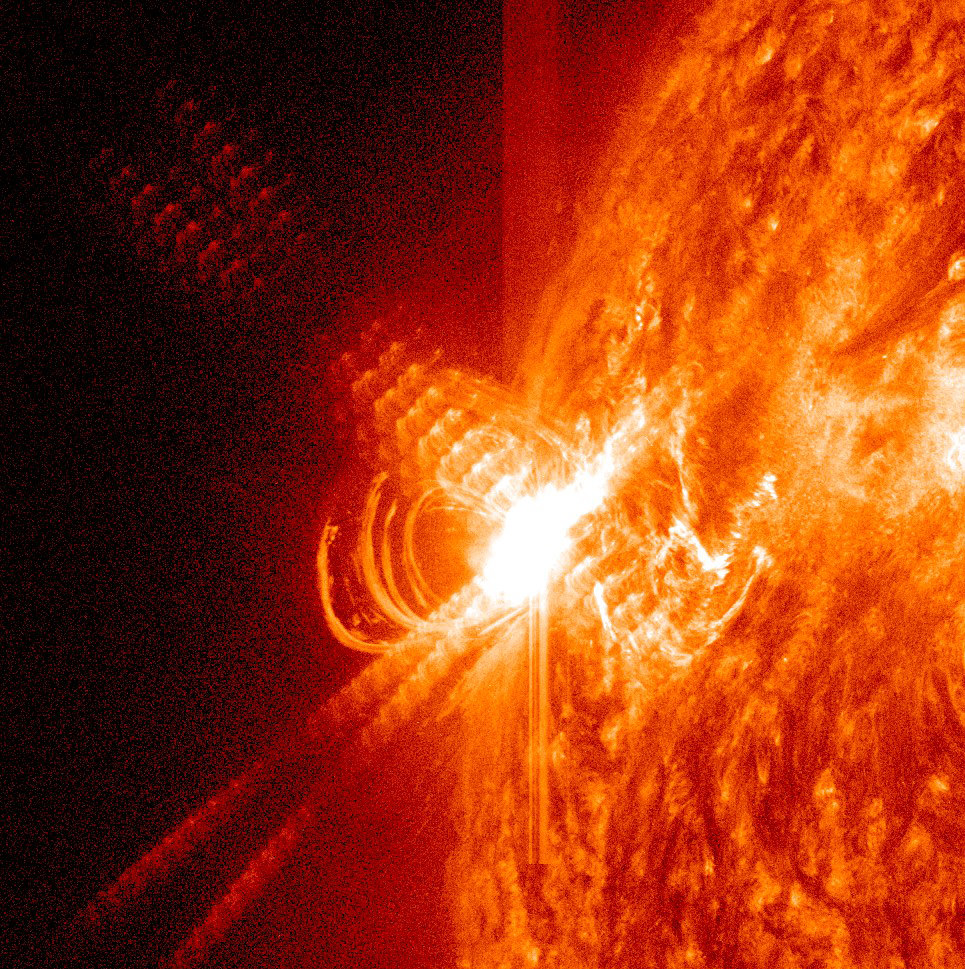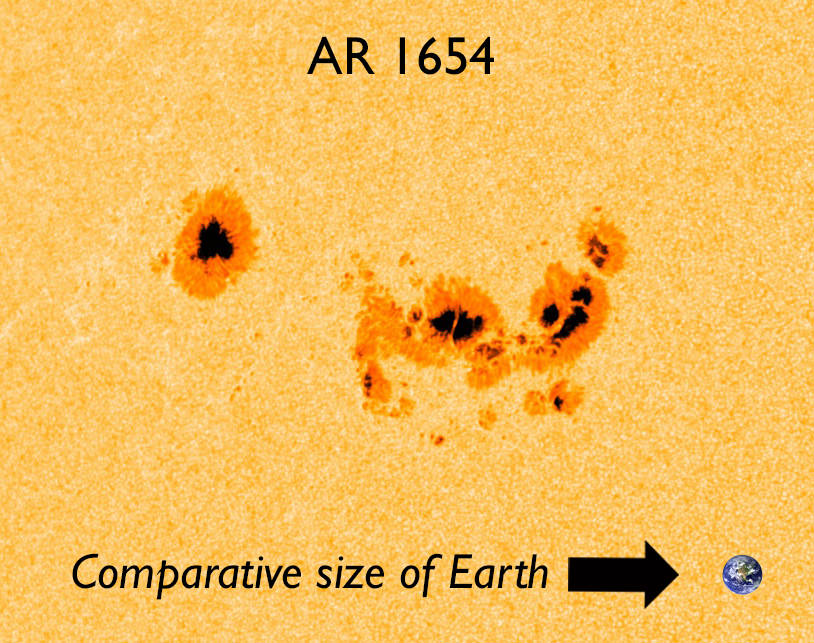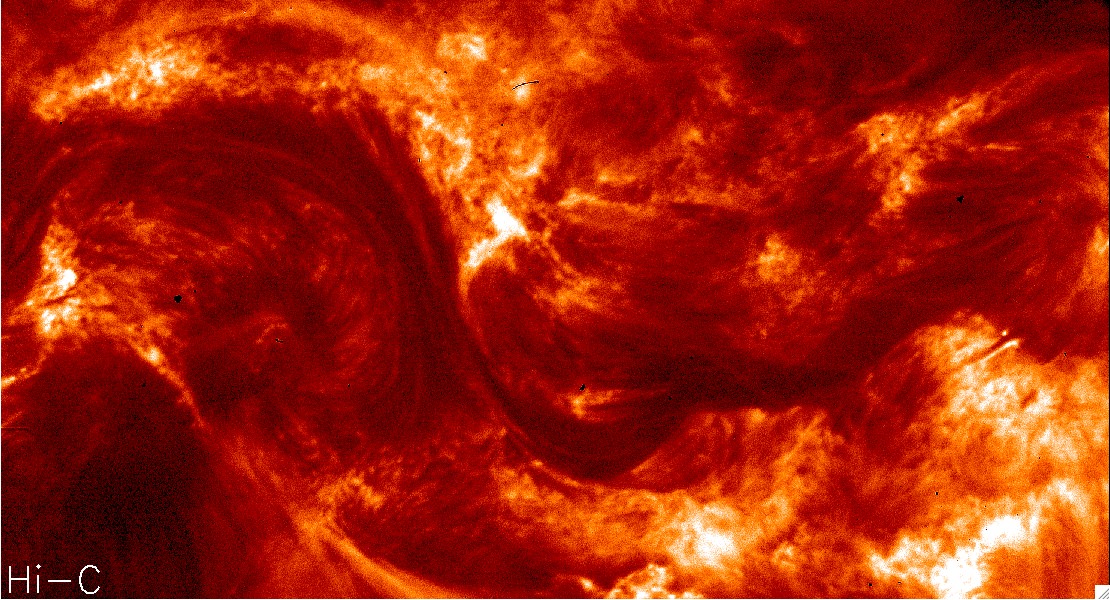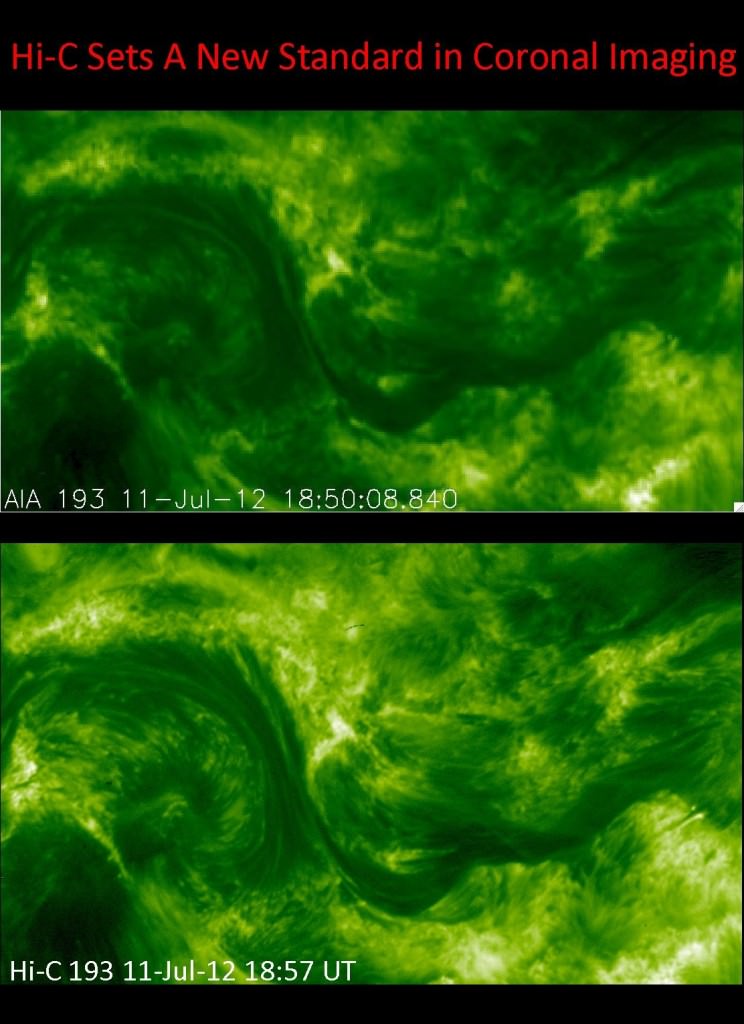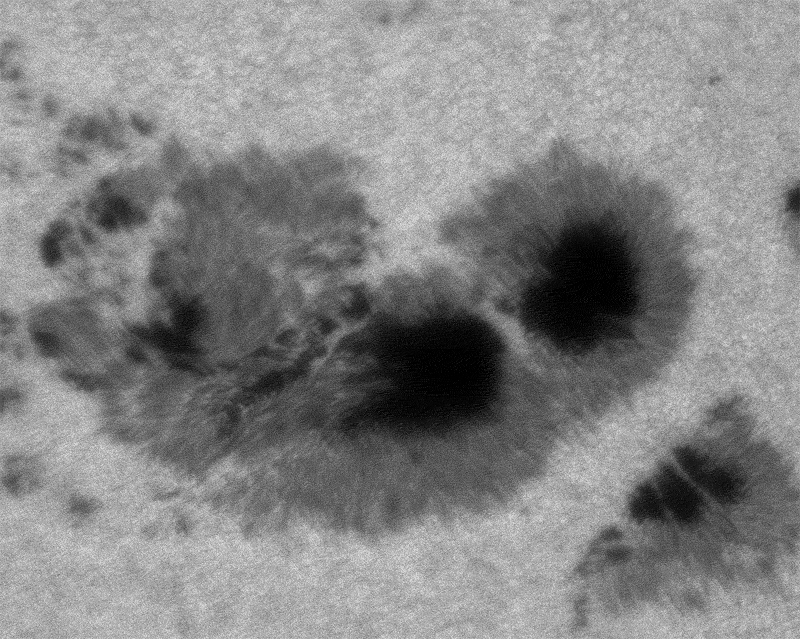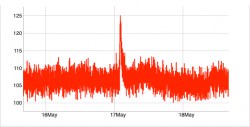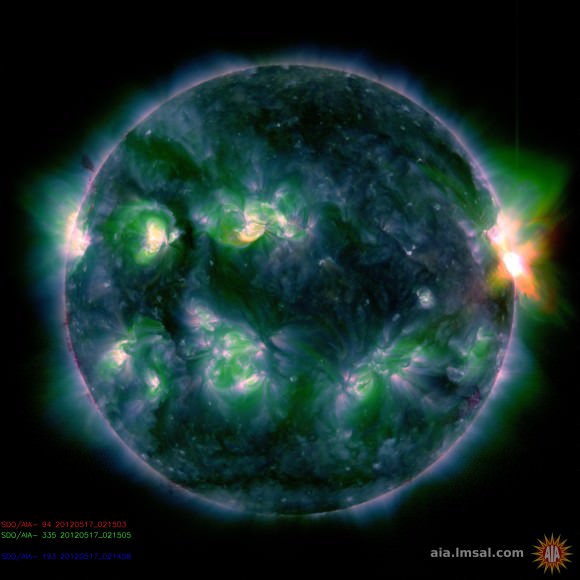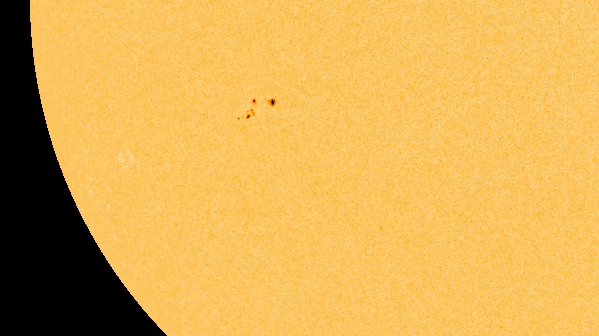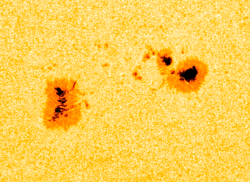Last night, as Commander Hadfield and the Expedition 35 crew were returning to Earth in their Soyuz spacecraft, the Sun unleashed yet another X-class flare from active region 1748, the third and most powerful eruption yet from the sunspot region in the past 24 hours — in fact, at a level of X3.2, it was the most intense flare observed all year.
And with this dynamic sunspot region just now coming around the Sun’s limb and into view, we can likely expect much more of this sort of activity… along with a steadily increasing chance of an Earth-directed CME.
According to SpaceWeather.com AR1748 has produced “the strongest flares of the year so far, and they signal a significant increase in solar activity. NOAA forecasters estimate a 40% chance of more X-flares during the next 24 hours.”
(Find out more about the classification of solar flares here.)
The sunspot region just became fully visible to Earth during the early hours of May 13 (UT).
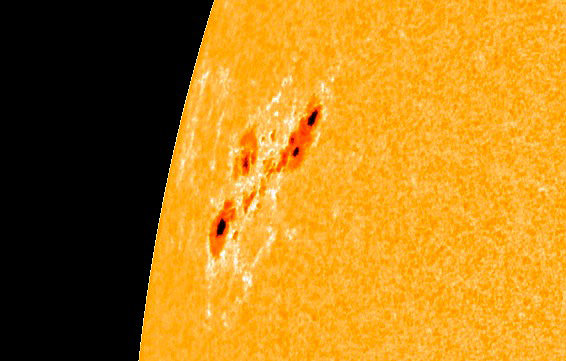
Sunspots are regions where the Sun’s internal magnetic fields rise up through its surface layers, preventing convection from taking place and creating cooler, optically darker areas. They often occur in pairs or clusters, with individual spots corresponding to the opposite polar ends of magnetic lines.
Sunspots may appear dark because they are relatively cooler than the surrounding area on the Sun’s photosphere, but in ultraviolet and x-ray wavelengths they are brilliantly white-hot. And although sunspots look small compared to the Sun, they are often many times larger than Earth.
Read more: How Big Are Sunspots?
According to SDO project scientists Dean Pesnell on the SDO is Go! blog, AR1748 is not only rapidly unleashing flares but also changing shape.
“The movies show that the sunspot is changing, the two small groups on the right merging and the elongated spot on the lower left expanding out to join them,” Pesnell wrote earlier today.
Of course, as a solar scientist Pesnell is likely much more excited about the chance to observe further high-intensity activity than he is concerned about any dramatically negative impacts of a solar storm here on Earth, which, although possible, are still statistically unlikely.
“Great times ahead for this active region!” he added enthusiastically.
For updated information on AR1748’s activity visit SpaceWeather.com and NASA’s SDO site, and also check out TheSunToday.org run by solar physicist C. Alex Young, Ph.D.
Images courtesy of NASA/SDO and the AIA, EVE, and HMI science teams.

